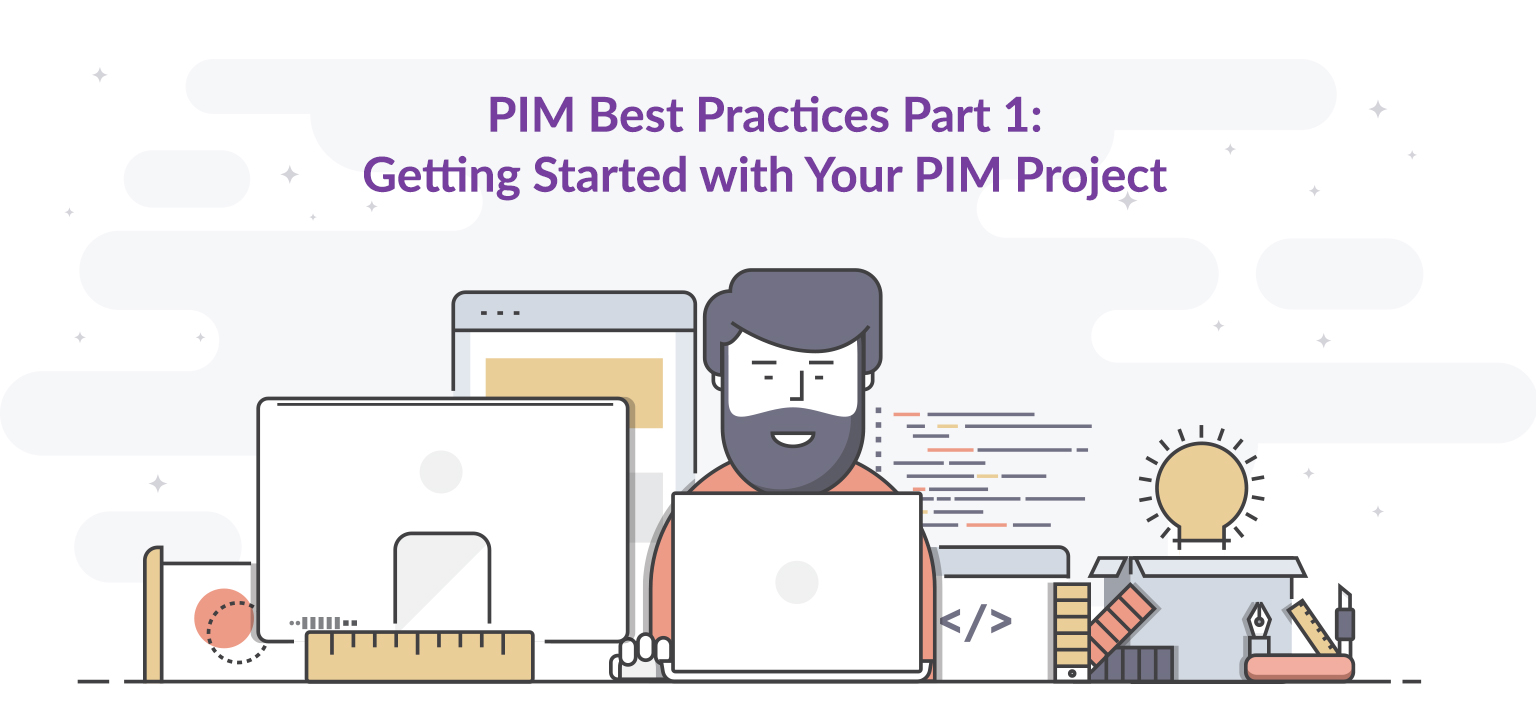This is a multi-part series on the top 10 product information management best practices. This first installment covers everything related to preparing...

Keywords
This is a multi-part series on the top 10 product information management best practices. This first installment covers everything related to preparing your PIM project scope, your team, and building your product catalog structure.
PIM solutions help improve product experience, streamline product data management, processes and workflows, and increase productivity. As a central repository for all product information, it is critical that organizations take the time to properly define and understand how they are going to utilize their PIM, so it can be optimized for their specific needs. This first set of best practices outlines the first 4 best practices to get started on your PIM journey.
A robust PIM solution can increase catalog management productivity by 50%.
Before you implement a PIM, determine the main business objectives you need to accomplish. This is an essential step to set expectations and define how you’ll measure success. With your objectives in mind, you can structure your PIM to support your commerce strategy.
Here are some examples of objectives that PIM can help you accomplish:
In a nutshell, building a robust PIM platform will support your brand’s growth.
Formalizing your business objectives upfront will pave the way to your PIM project success.
Next, you can start thinking about the scope of your project. Should you model your entire catalog and start managing all your products from the beginning? Or should you take a “land and expand” approach to begin, starting with a subset of your brands, products, channels, or locales? The decision will depend on your business goals for implementing PIM as well as the complexity and maturity of your organization. Whether you decide to start small or big, it’s critical to design your PIM project for all your current and future needs.
The argument for starting small is that you can test and implement processes and connections to your other business applications to ensure everything works as expected, and then roll it out more broadly in subsequent phases. This approach can work well for larger enterprises who want to start with a product line or a particular region before rolling out across the entire organization.
On the other hand, some enterprises may benefit from an all-at-once roll out that will give the full benefit of product data and process centralization.
Regardless of approach, make sure it is right for your business objectives and ask yourself these questions:
Thinking big but starting small offers the opportunity to iterate, optimize, and then expand in a controlled and coordinated manner.
With overall business goals and scope well-defined, you must next identify the team that will be working on your PIM project, determine and assign their roles, and define your optimal product information management process.
Determine who will be working with your PIM early in the process. Ideally, these individuals will have comprehensive knowledge of your products, your desired catalog structure, and your commerce channel needs. PIM is a business application designed to serve your teams, not the other way around, so you want to make sure to identify the people who are responsible for managing product information and who will benefit from the time-saving functionality of the PIM solution.
Once you have selected your team, it’s important to figure out what your product information management and enrichment processes will be and how your team will fit into the workflow. Remember, these individuals are your experts in this domain, so they likely have an idea of how they want things to flow as well as suggestions to make things even better.
Identify each individual’s contribution to the process and make a list of all the roles and the permissions they will need to complete their job duties. The golden rule of PIM is to have your team focus on high-value tasks instead of repetitive ones. Computers are really good at dealing with repetitive tasks and organizing complex sets of information—they’re not so good at creating emotional product descriptions that communicate your brand value. With this golden rule in mind, you can easily keep your roles and permissions smart and effective.
The golden rule of PIM: Use PIM to automate and simplify repetitive tasks so your team can focus on creating emotionally compelling content that sells your products.
In order to get the most out of your PIM project, you need to ensure your team is fully trained on how it works and what it will do to make their day-to-day work easier. Don’t underestimate the change that you are going to impose on your team. Using a new tool requires understanding a new process and establishing new habits. Make sure your team has the proper functional and technical training they need to fully understand how to use the PIM and to understand the benefit that comes with fully adopting it for catalog management.
Functional training will cover day-to-day use and operation of the PIM by your marketing and catalog management team including how to create a catalog, organize products, and manage attributes and images.
Technical training for your PIM technical team will cover the technical implementation, performance tuning, and system integration.
Getting internal adoption of the PIM is critical. Make sure you support your team throughout the change to ensure a successful adoption and implementation to realize the full benefit of your PIM project.
New tool = new habits, the success of your PIM project lies in the buy-in of your team.
Building out your catalog might seem like a simple task at the start if you know your product offering well. But in reality, building an efficient catalog structure requires an in-depth understanding of your product categories, families, variants, and attributes, and how the catalog may be used differently in different sales channels and locales.
A common mistake for organizations is to start utilizing PIM as just a “nice database interface” rather than taking advantage of all of its tools and features. A PIM is more than just an interface to create, read, update, or delete items. PIM allows you to efficiently model your catalog for all your channels and locales, and define only what your business requires.
Your catalog structure should take into account and support:
PIM is much more than a nice database interface, it is a business application.
The days of managing product information in spreadsheets are over. PIM revolutionizes data management by acting as a central repository for all product information with functionality that streamlines processes and workflows. The initial setup of your PIM project is critical to implementation success as well as long-term utilization. By following best practices from the start and involving your PIM stakeholders, you’ll be positioned to realize the maximum business value from your PIM investment.
Ready to see what PIM could do for you? Sign up for a demo.
Or, want to see how to get started with PIM? Check out Part 2 and Part 3 of our Best Practices series, or download our eBook Product Information Management 101.


Keeping regulatory information accurate and up to date is vital to avoid costly penalties and safeguard consumer trust. In this guest blog by Akeneo...
Read more
The retail industry is evolving fast, and 2025 is set to bring exciting changes. Whether it’s the revival of in-store shopping, the rise of social...
Read more
Discover how businesses can easily lower their return rates this holiday season. By providing accurate product information tailored to various...
Read more